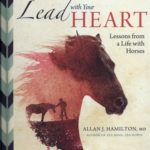The hardship of sleeping and eating (just surviving, really) on cattle trails were brutal. Though some modern cowboys keep to the old tradition of bed rolls around the campfire, trail technology has come along way. Today, sheep camps and modern “chuckwagons” are hooked up with sophisticated technology and plenty of luxuries.

Since Texas cattle were first driven north in the 1840s, cowboys carried little in the way of clothing?just one (maybe two) change of clothes, in case the other ripped. A typical wardrobe included two pairs of wool pants, a few wool shirts, one jacket, denim jeans (aka waist or riveted overalls), a bandana, and a hat. In earlier years, cowboys wrapped their lower legs in deerskin, though chaps later became the norm.
?Today we don’t understand what it was like to live outdoors 24 hours a day and never go inside,? says Don Reeves, McCasland Chair of Cowboy Culture at the National Cowboy & Western Heritage Museum in Oklahoma.
Cowboys slept out in the open on a ?Tucson bed,? fully exposed to the elements. A ground cloth plus wool blankets, a combo known as the ?flea-trap,? served as the bed. Sleep was hard to come by, though, as cowboys took night shifts guarding the herd from attack and singing to prevent strays and stampedes.
For common ailments, like a toothache, ?medicinals? (usually whiskey) were administered to help cowboys tolerate the pain. Out on the trail, Cookie would often be the one to splint an arm or leg.
Wood for fires was limited on prairie drives, so buffalo and cow chips often served as fuel. Friction matches or flint and steel were the trusted fire starters, and tinder pouches with dried material were always carried. A cuna was strung beneath the chuckwagon?it was an animal hide into which cowboys would place collected wood as they went along.
Before the advent of the chuckwagon in the mid-1860s (which would carry heavy supplies and cookware), cowboys would strap a ?greasy-sack??a canvas cloth with biscuits and salt pork?to the back of their saddle. Reluctant to eat their cattle and cut into profits (unless a calf ?dropped? along the trail, in which case cowboys might prepare Son-of-a-Gun Stew), Cookie would try to hunt game (venison, wild fowl, possum, rabbit, and occasionally buffalo), and scavenge berries, wild plums, and grapes. Familiar foods were packed along as well: flour for biscuits, salt pork, beef, beans, and coffee.
Today,camp in comfort and style with a Timberline Range Camp. Complete with a wood-burning stove, solar panels, and accents of wood and leather, these rugged trailers (19?25 feet) are a far cry from sleeping on the ground and cooking outdoors.
$20,000?$42,000; 435-462-5300, www.sheepcamps.com








